Queering Clay: Five LGBTQ+ Ceramists You Need To Know
Clay has always been a little gay. Historically associated in the West with the decorative and the domestic, ceramics has long been regarded as a feminized practice with a particularly strong queer dimension because of its status as a subaltern, or less than, painting and sculpture.
Ceramics was also integral to the feminist reclamation of art practices in the 1970s—the most famous example perhaps being Judy Chicago’s monumental installation The Dinner Party. Post-Stonewall, a generation of male artists in the Canada and the U.S., including Léopold Foulem, Paul Matheiu, and Richard Millete began queering the medium, embedding camp, kitsch, and sexually suggestive imagery in their work.
Now, there are a multitude of artists working in the U.S. and Canada who are using clay to explore queerness and continuing to push the boundaries of the medium. Here are just a few of those artists who we think you should know:
Léopold L. Foulem
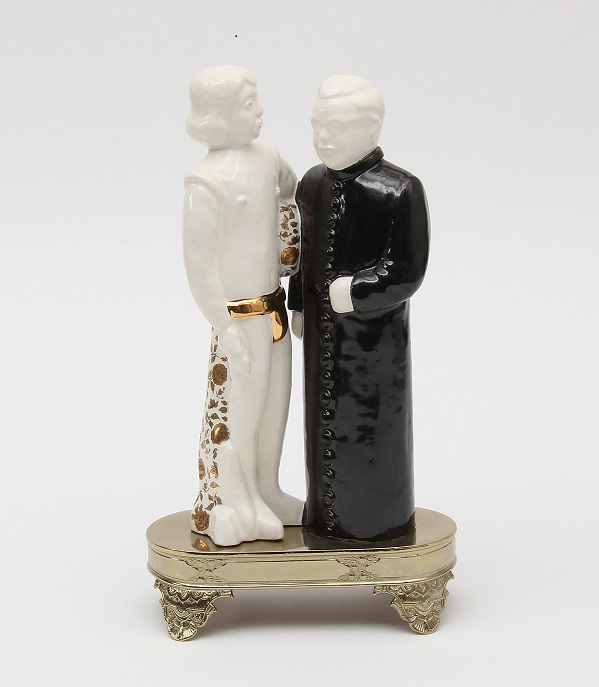
Léopold L. Foulem’s subversive ceramics combine playfulness and humour with historical references to the decorative arts. Celebrated both as an artist and teacher, Foulem mentored other notable ceramists including Richard Milette, Paul Matheiu, and Jeannot Blackburn. He played a leading role in broadening the scope of Canadian ceramics to include explicitly political and social content, and was named to the Order of Canada in 2019.
Ayumi Horie
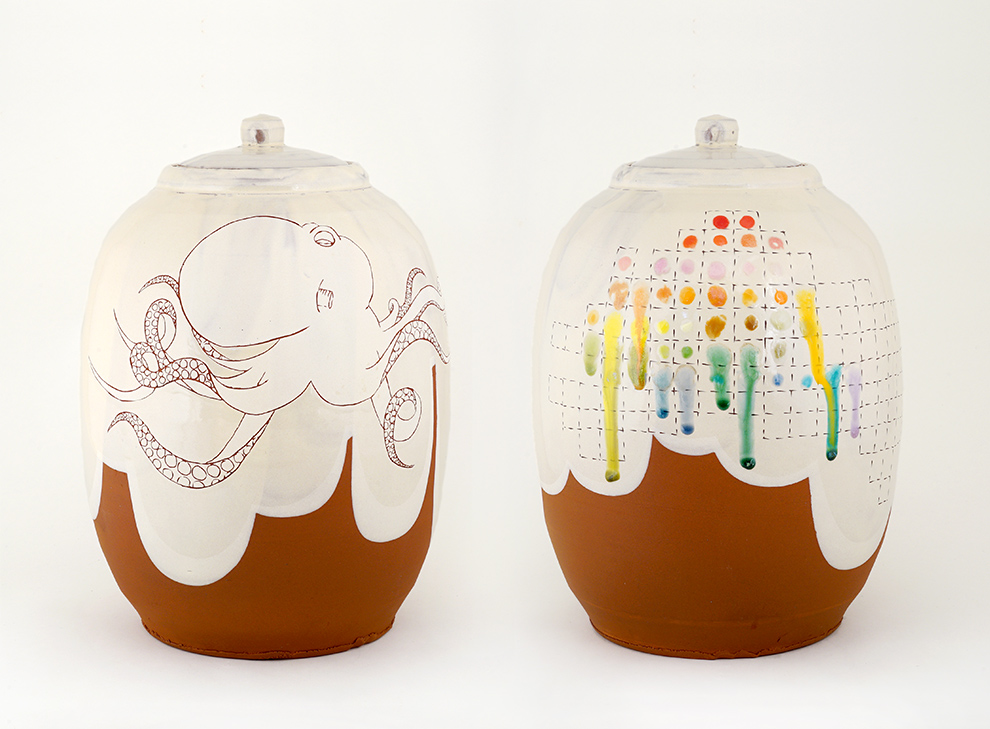
As an undergraduate student at Alfred University, Ayumi Horie developed a unique process called “dry throwing,” a waterless method that encourages the natural textures and movements of clay: stretching, cracking, and sagging. She advocates for social engagement and action both through her own ceramics and as the founder of the popular Instagram account @potsinaction. In 2016, Horie co-founded The Democratic Cup project, a collaboration between 35 illustrators and potters that uses handmade cups to encourage civil conversations about social and political issues.
Kathy King
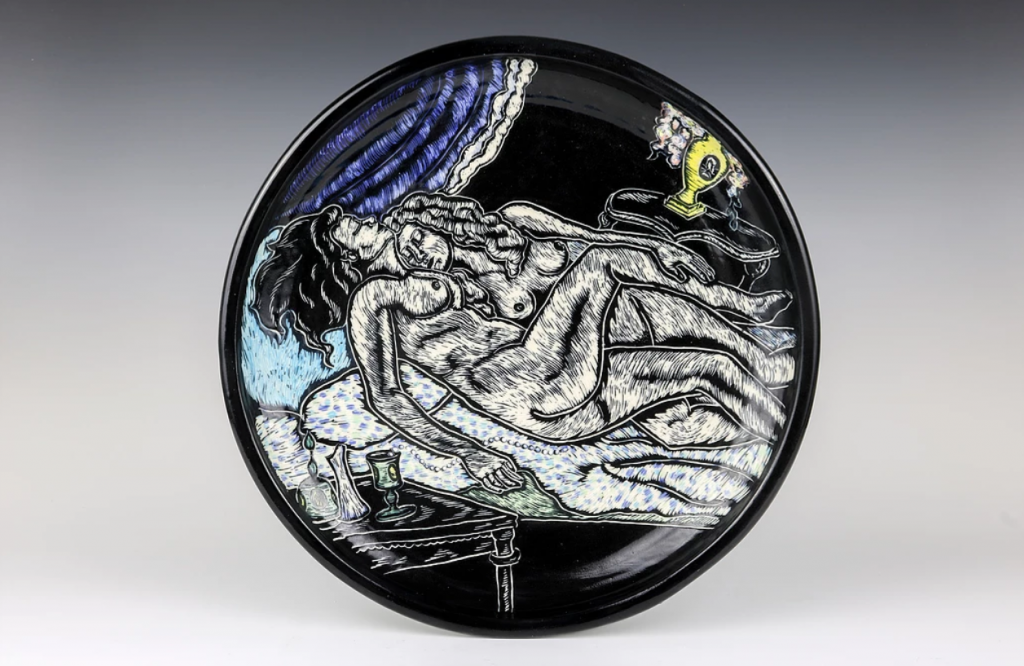
Kathy King uses satirical humor, irony, and sarcasm to approach issues of gender and sexuality, often featuring lesbian and feminist imagery in her ceramics. She cites comic books and tattoos among her inspirations, connecting her work in clay to her drawing practice. Her use of sgraffito, an etching technique, makes clear reference to her training as a printmaker.
Grayson Perry
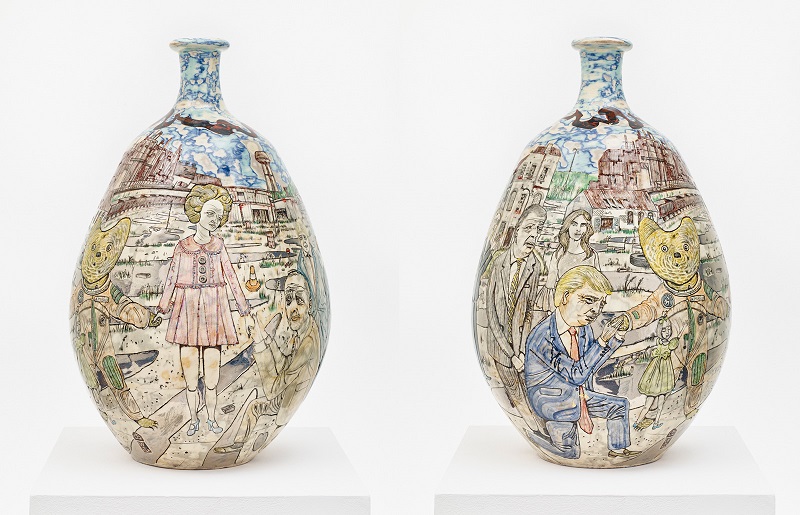
The first ceramic artist to win the prestigious Turner Prize, Grayson Perry is known for his brightly-coloured ceramic vessels and tapestries that draw on autobiographical and pop culture imagery to chronicle contemporary life. A self-identified transvestite, Perry’s work often features the artist as his female alter-ego Claire.
Dustin Yager
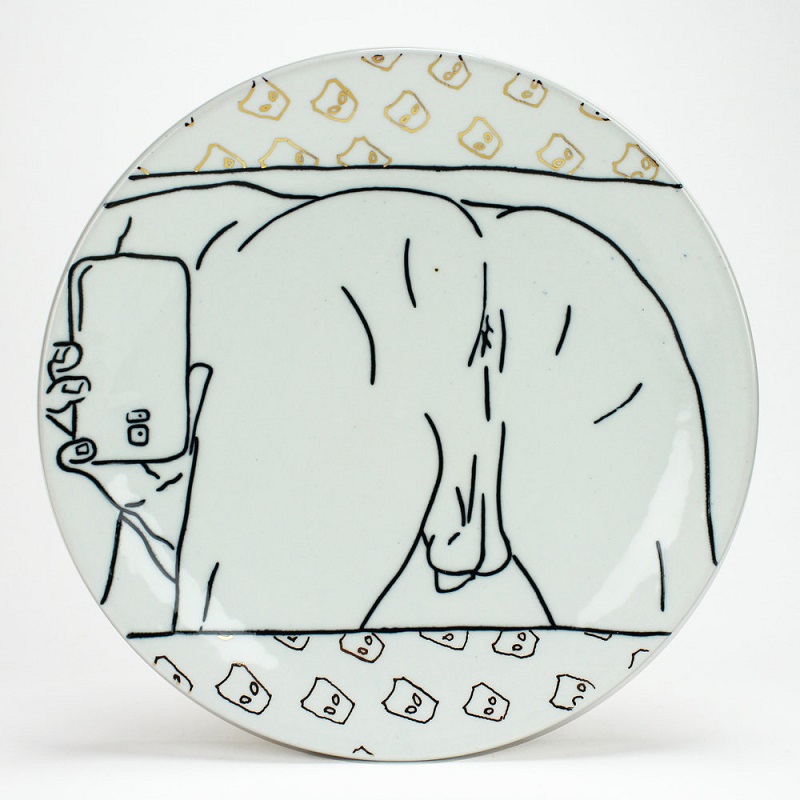
Dustin Yager is a ceramic artist whose work deals with popular perceptions of pottery, taste, and class. Combining traditional materials and methods with explicit imagery, depictions of gay sex become cheeky adornment for his finely thrown porcelain forms. Yager actively engages with queer theory in his work, combining high and low cultural references à la Grayson Perry, as interpreted by a younger generation.
[1] Juicy Banana, Léopold L. Foulem, 1976, Gift of Léopold L. Foulem [2] Priest in Black Cassock with Boy on Mount, Léopold L. Foulem, 2012, The Diana Reitberger Collection [3] Octopus Jar, Ayumi Horie [4] Plate by Kathy King [5] Alan Measles and Claire Visit The Rust Belt (views of both sides), Grayson Perry, 2017 [6] Plate by Dustin Yager